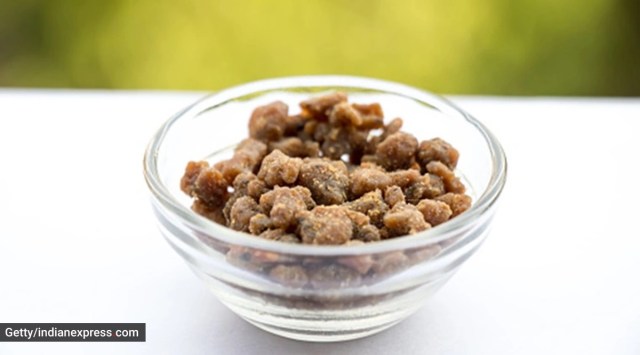- India
- International
Kitchen spice: Know all about hing or asafoetida
As a seasoning, it is known for its strong odour which is due to its high concentration of sulfur compounds
 Were you aware about how hing is made? (Source: Getty Images/Thinkstock)
Were you aware about how hing is made? (Source: Getty Images/Thinkstock)One of the foremost ingredients in the kitchen is hing or asafoetida. The spice not only lends flavour to foods, it is also a powerhouse of nutrients and is a must for people dealing with stomach-related issues like gas and bloating. But did you know how it is made and from where it comes? A street food blogger posted on his Facebook page Foodie_Incarnate about how the pungent spice is obtained.
Here’s what to know.
According to the Book of Spice author John O’Connell describes how Mughals from the Middle East first brought hing to India in the 16th century.
Extracted from the dried sap of the stem of female species of the Ferula Assa-Foetida or fennel plant, the resin-like gum is collected and crushed with the help of a hammer which requires a lot of manpower.
The blogger showed in his video how a species of the herb is found in Afghanistan, Uzbekistan, and Iran. It only thrives in dry and cold desert conditions. The condiment produced in Kashmir and in some parts of Punjab but in order to meet India’s domestic needs, it has to be imported mainly from Afghanistan and Iran, informed executive chef Amit Kocharekar, The Resort Mumbai.
While it is very popular in India, some European countries too use it for its medicinal properties, experts say.

Once the stones are imported (as much as 1,200 tonnes of asafoetida worth Rs 600 crore every year), they are ground to a powder and mixed with wheat in factory settings, and manufactured sans impurities.
Types of hing
There are two varieties of asafoetida: milky white asafoetida, or hing kabuli safaid; and red asafoetida, or hing lal, said chef Kocharekar. “Both are used as a flavour in curries, pickles and sauces,” he said, adding that hing is considered to be “a spice of very high value”.
As a seasoning, it is known for its strong odour which is due to its high concentration of sulphur compounds. According to healthline.com, when cooked, its flavour and smell become much more palatable and are often described as being similar to those of leeks, garlic, and even meat.
Chef Regi Mathew, culinary director and co-owner- Kappa Chakka Kandhari (Bengaluru and Chennai) told indianexpress.com, when heated, the aroma of this raw ingredient changes into a magical flavour and is a culinary wonder in South Indian cuisine for this very reason. “In certain parts of Kerala, it replaces the use of garlic and onion in sambar. It also has great medicinal value and is anti-microbial hence used in the making of pickles.”
He also shared that the spice plays “a critical role in Kerala vegetarian cuisine and used in dishes with lentils/pulses, and beans”.
While it is an interesting spice, it has to be used in the right quantity, experts caution. Even a little too much overpowers the whole dish and makes it taste bitter.
Benefits
Experts say it is bestowed with carminative, anti-viral, anti-bacterial, anti-inflammatory, sedative and diuretic properties. This means that from lowering blood pressure to relieving menstrual pain, hing has various benefits.
It is believed to be useful in the cure of various ailments, from kidney stones to bronchitis among other benefits said Tanvi S. Chiplunkar, senior dietician, Bhatia Hospital Mumbai. “It is known to prevent illnesses of the gastro-intestinal tract. Women afflicted with menstrual pains or excessive bleeding derive benefit by consuming asafoetida; similarly, it is used to alleviate the problem of excessive bleeding during premature labour. Lactating mothers are advised to add half a teaspoon hing per day to their diet because of its anti-flatulent properties. It is also used as a remedy for some allergies.”
📣 For more lifestyle news, follow us on Instagram | Twitter | Facebook and don’t miss out on the latest updates!
Apr 25: Latest News
- 01
- 02
- 03
- 04
- 05


























